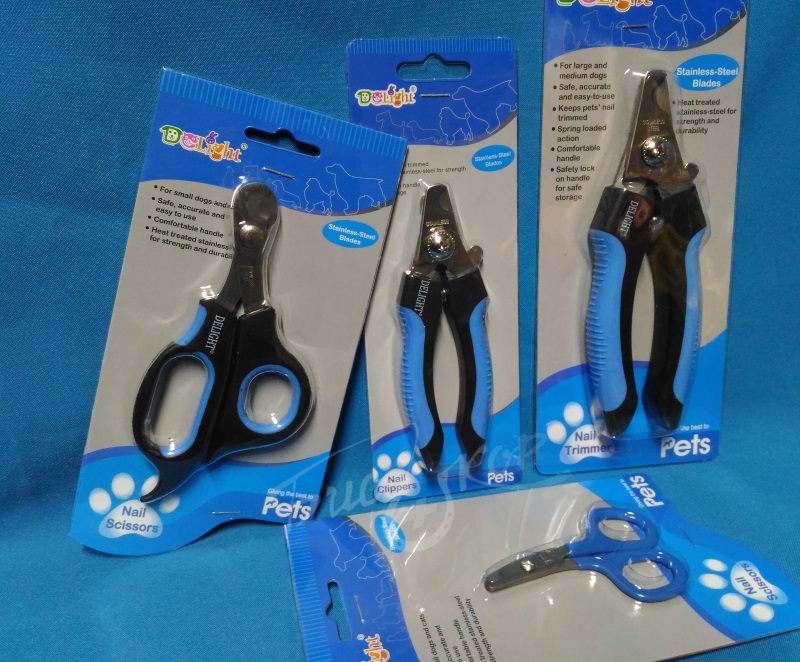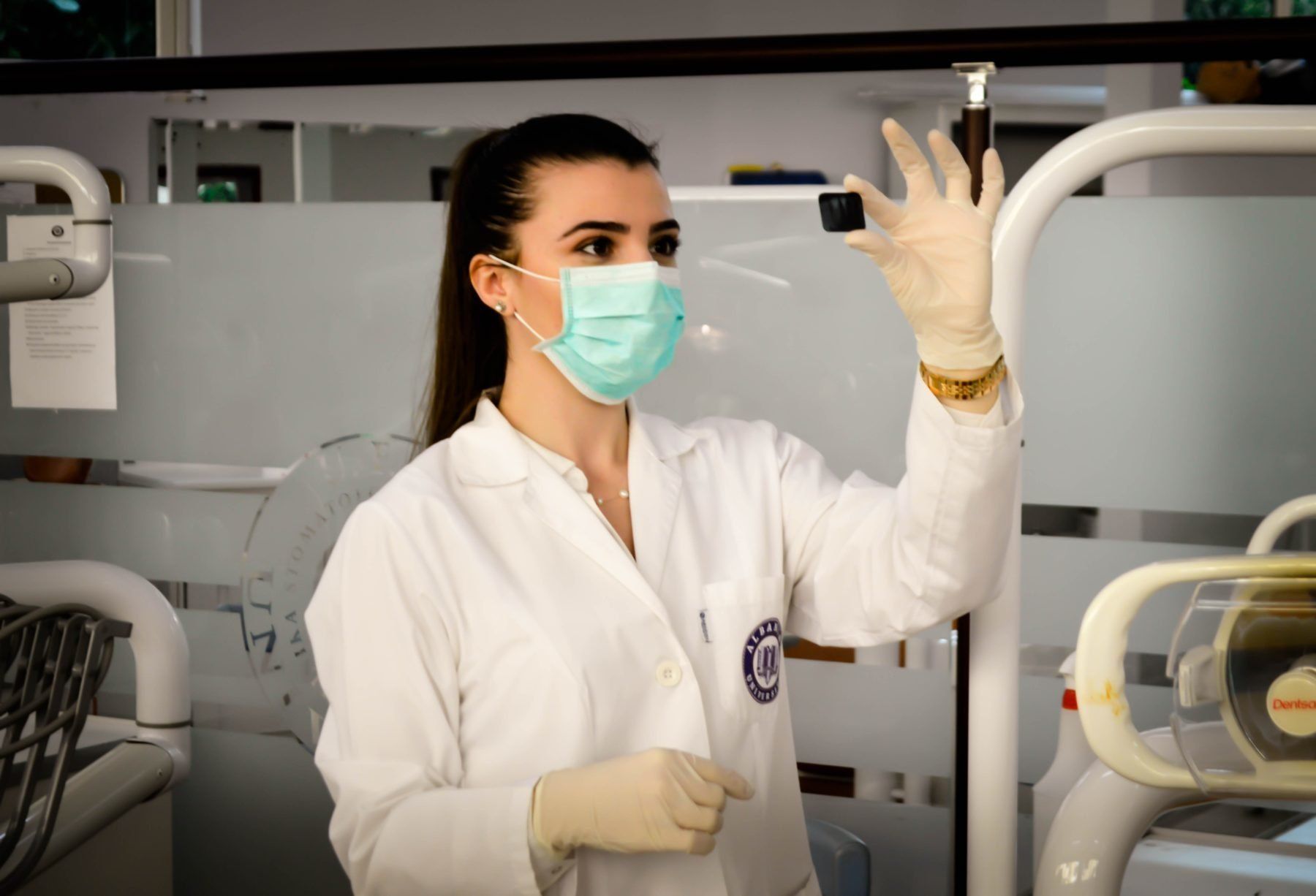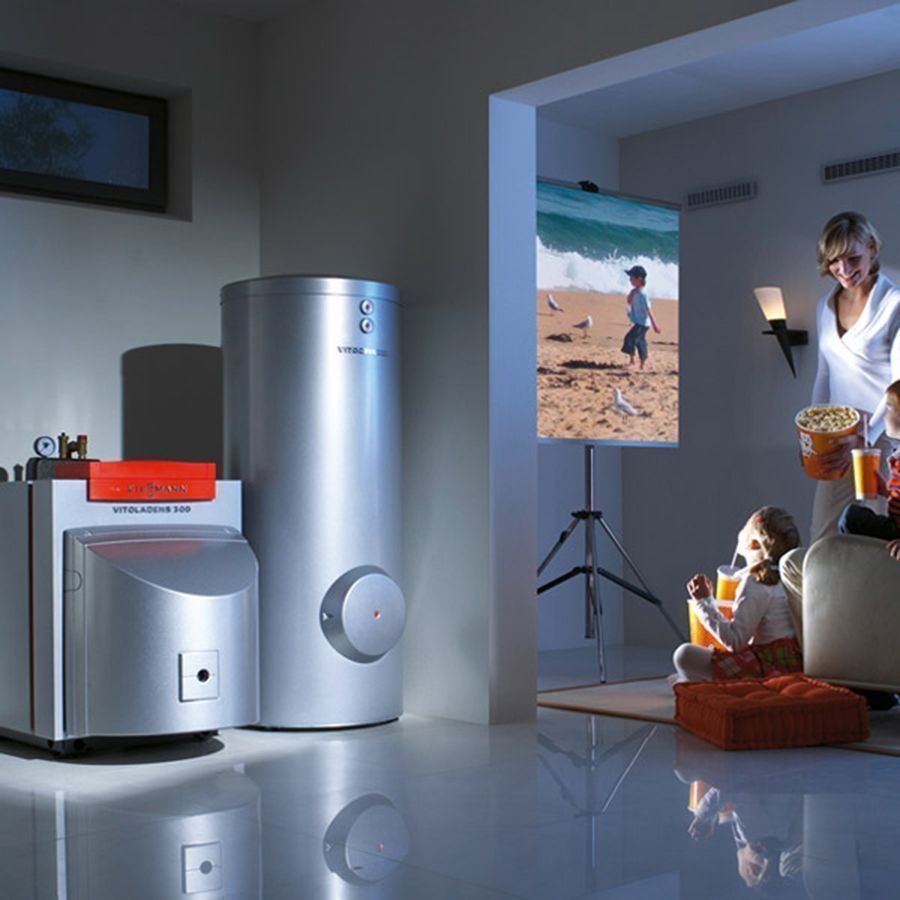The best anti-hernia bandages in 2022

There are many indications for wearing a bandage. They are recommended to be worn after operations to prevent the formation of a hernia, they are also worn if the body is predisposed to their formation, as well as during significant physical exertion. Before buying such a device, you need to know how to choose it correctly and how to put it on. And the rating of the best anti-hernia bandages will help you choose the right model.
Content [Hide]
Which specialist to contact with a hernia
You can suspect the appearance of an umbilical hernia by a small bulge in the navel. This sign is clearly visible and is characteristic of this disease. The bulge can have a different size. At the initial stage of the development of the disease, it is hardly noticeable, and in the supine position it is not visible at all. If the hernia is running and no treatment has been carried out, then the protrusion is very large.
Another way to recognize a hernia is to cough a little while placing your hand on the area of the protrusion on your stomach. Then a characteristic push is felt.
Treatment of the disease in adults is carried out exclusively by surgery. Therefore, it is necessary to contact a surgeon. Operations are carried out in different ways, depending on the location and characteristics of the protrusion.
If the hernia is not infringed, the operation is carried out according to plan, with the patient admitted to the hospital in advance. In this case, it is necessary to start treatment as early as possible in order to minimize the risks and complications.
Hernia in young children is a fairly common occurrence. But unlike adults, children are treated conservatively. The reason for this is that the umbilical ring in a small child under five years of age can grow on its own. Therefore, children under 6 years of age are recommended to wear a bandage. The device prevents protrusion of the intestine with a special hernial limiter and prevents pinching of the hernial sac. As a result, the umbilical ring in most cases overgrows in childhood.
The purpose of the bandage
The main functional task of this device is to support organs that tend to fall out. Its other purpose is to counteract the further development of the disease.
Usually, a doctor prescribes to wear a bandage to prevent complications such as the growth of a neoplasm in size or its pinching when the muscles of the abdominal wall tense up. The device has a mild repositioning effect on the problematic organ and takes on the function of supporting the muscles. This makes it possible to prevent stretching of the connective tissue and growth in the size of the hernial orifice.
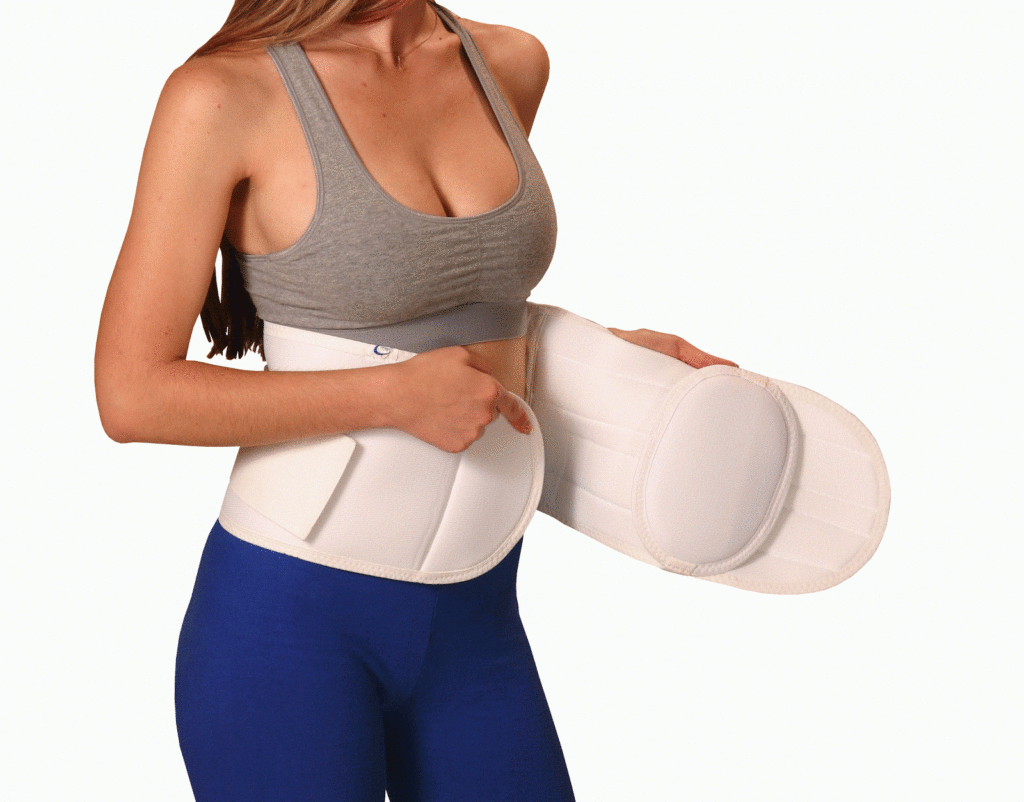
For the use of anti-hernial bandages, there are the following indications:
- to prevent a pathological condition if there is a predisposition to protrusion;
- pregnancy;
- significant physical activity;
- surgical removal of the protrusion to prevent recurrence and relieve pain.
The obstacle to the use of a bandage corset are:
- violation of the integrity of the dermis in the area of impact of the bandage;
- skin diseases;
- diseases of the heart and blood vessels;
- malignant neoplasms.
The corset should not be worn in the final stages of the disease. This only weakens the muscles of the peritoneum and provokes an increase in the size of the pathology.
Tasks solved by using a bandage belt
By wearing a special corset, you can greatly improve the tone of the muscles of the abdominal wall. The belt also stimulates the blood flow of internal organs, thereby accelerating their regeneration.
On the bandage belt, special pads are sewn, called pads. Thanks to them, a local effect on the hernia tumor is carried out, which provides a therapeutic effect. If there are stiffening ribs on the corset, then the spine receives additional support, the muscles improve their tone, the hernia reduces its growth, as the belt restrains it.
Wearing a bandage corset after surgery allows you to speed up and facilitate the rehabilitation period.The elements of the bandage put pressure on the diseased area and do not allow a new protrusion to form. In addition, such a device restrains the divergence of the postoperative suture.
Varieties of bandages
In medicine, there are several types of protrusion. For this reason, anti-hernial belts are different.
The umbilical bandage is made in the form of a belt made of dense but elastic fabric. Its width is not less than 20 cm. It has protective straps and locks. This belt prevents the formation and pinching of a hernia, it is usually used after surgery. For the manufacture of such devices, high-quality hypoallergenic fabrics with breathable properties are used.
The inguinal bandage is made in the form of a narrow stretchy tape, equipped with straps and pockets for placing pads. Such devices are used both for the treatment of an existing hernia, and to reduce the risk of its formation. The design is unique in design and is used for different locations of the protrusion. Similar designs are female or male and differ in shape. Such a belt puts pressure on the area of the inguinal or femoral canal and does not allow the organs to come out.
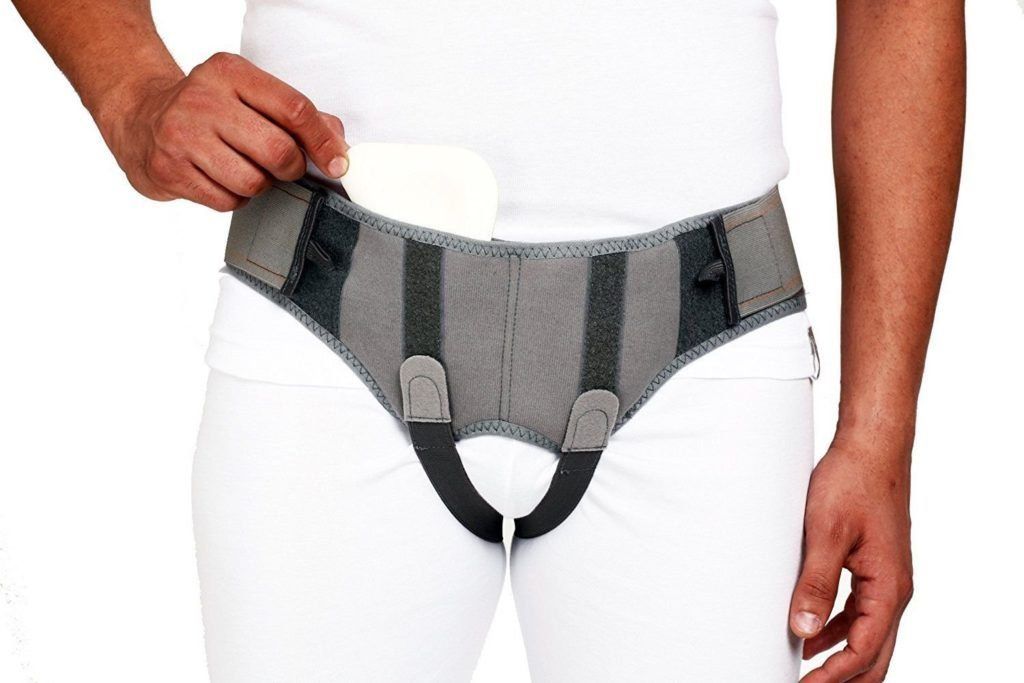
The abdominal bandage is made in the form of a large width belt with a seal on the abdomen. For its tailoring, an elastic fabric with special inserts is used. It allows the corset to fit tightly to the body. Such a device is prescribed to be worn after surgical removal of the protrusion.
Separately, prenatal bandages are distinguished during pregnancy. They help support the abdomen and hold the existing hernia without significantly affecting the development of the fetus.
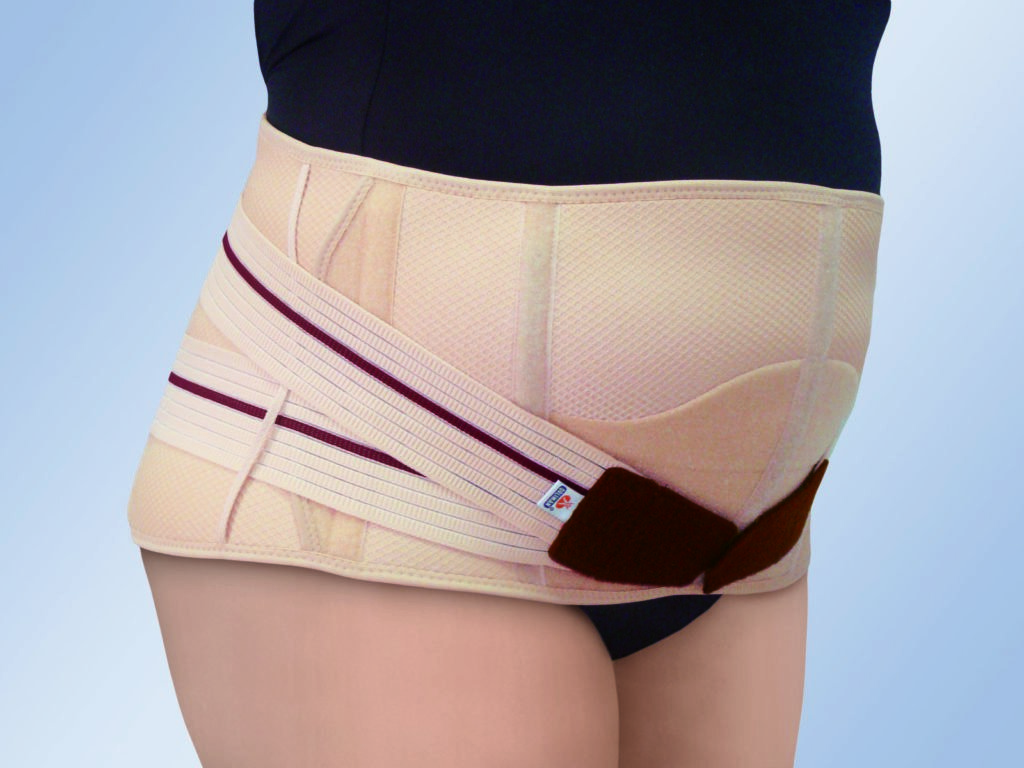
Postoperative bandages are additionally equipped with fasteners that hold the structure on the chest.Such corsets do not affect the stomach, reduce pain and relieve stress on the existing seams, preventing the hernia from reappearing.
The pelvic bandage is made in the form of a narrow belt and is complemented by inguinal straps. Such a device reduces pain and prevents the further development of the disease.
Baby bandages are designed to slow down the growth of the bulge. For the manufacture of such a corset, only high-quality hypoallergenic fabrics are usually used that do not cause concern to the child. Children's models are designed for newborns and preschoolers.
How to choose the right bandage
You should go to a pharmacy or a specialized store for a bandage after consulting with your doctor. The specialist must prescribe the desired type of device, taking into account the existing diagnosis. It is important to take into account not only the width of the belt, but also the force of the pressure exerted, and the reliability of fixation.
When buying a bandage, you need to take into account the following factors:
- All fasteners and locks must be checked for serviceability. There should be no spontaneous unfastening.
- The fabric of the bandage must be breathable. An additional advantage will be a special antiseptic impregnation.
- The belt must be selected in width, taking into account the features of the patient's figure. With a wide belt, the degree of fixation of the protrusion will be small, and if it is narrow, there will be strong pressure on the peritoneum.
- The device should be measured before purchase to ensure a comfortable fit. The seams should not rub, the pads should be positioned correctly. It will be correct to try on different models in order to choose the most comfortable option.
- One of the important characteristics is the inconspicuous location of the belt under the clothes.This feature is possessed by devices made in the form of swimming trunks.
- You need to choose the right belt size. To do this, you need to take into account the measurements of the hips and waist, according to which the dimension is determined. When choosing a groin device, you need to take into account other dimensions.
In order for the product to serve for a long time, it must be properly looked after. Therefore, even in the pharmacy, you need to familiarize yourself with the basic rules for cleaning or washing, if it is not prohibited. Models that are not washable should be placed in a special removable cover to prevent contamination. It is usually made from a skin-friendly fabric.
Before buying, be sure to ask about the availability of special certificates and other documents that would confirm the quality of the product.
How to properly use a bandage
It is necessary to put on a supporting device while lying down. This posture allows the muscles to be relaxed, which helps to reduce the size of the hernia. Before putting on the bandage, you need to massage the stomach near the navel with stroking movements, place the pellot on the protruding area and carefully set the tumor in place. After that, the belt must be wrapped around the body and fixed in front with a fastener.
The bandage can be worn during the daytime, but not longer than a few hours. After removing the device, you need to easily massage the stomach without affecting the protruding area.
The duration of wearing a corset is determined by the attending physician. Before surgery on a hernia, the device must be used constantly. After that, the use of support is recommended only for the first two months. At the same time, every 3-4 hours of continuous wearing, you need to remove it and give the body a little rest.Otherwise, the muscles of the peritoneum will become weak and will not hold the organs, which contributes to the recurrence of the disease.
Active use of any bandage is possible throughout the year. Then the elasticity of the tissue decreases. This causes the clasp to dislodge and the belt to stop working effectively.
List of the best children's bandages for hernia treatment
Babies under 1 year old should be shown to the pediatrician monthly. If a hernia was found during the examination or the specialist found that the child is predisposed to it, then the use of a special bandage will be prescribed.
Such a belt is made of materials that are pleasant to the skin and do not provoke allergies. The duration of wearing an anti-hernial bandage is adjusted individually, taking into account the condition of the child.
Orlett HP-B
votes 0
This bandage is made in Germany and is recommended for children from birth to three years. The belt is equipped with a rounded pelt, which takes into account the anatomical features of the child's navel. When wearing it, the therapeutic effect will be noticeable from the first days. This bandage can be used both for the treatment of an existing hernia, and to counteract its formation.
The disadvantage is that the dorsal part of the bandage is not wide. Since the child is in motion, it can roll and cause discomfort. In addition, the bandage can move, and it has to be corrected all the time. For convenience, it is recommended to wear a belt over clothing.
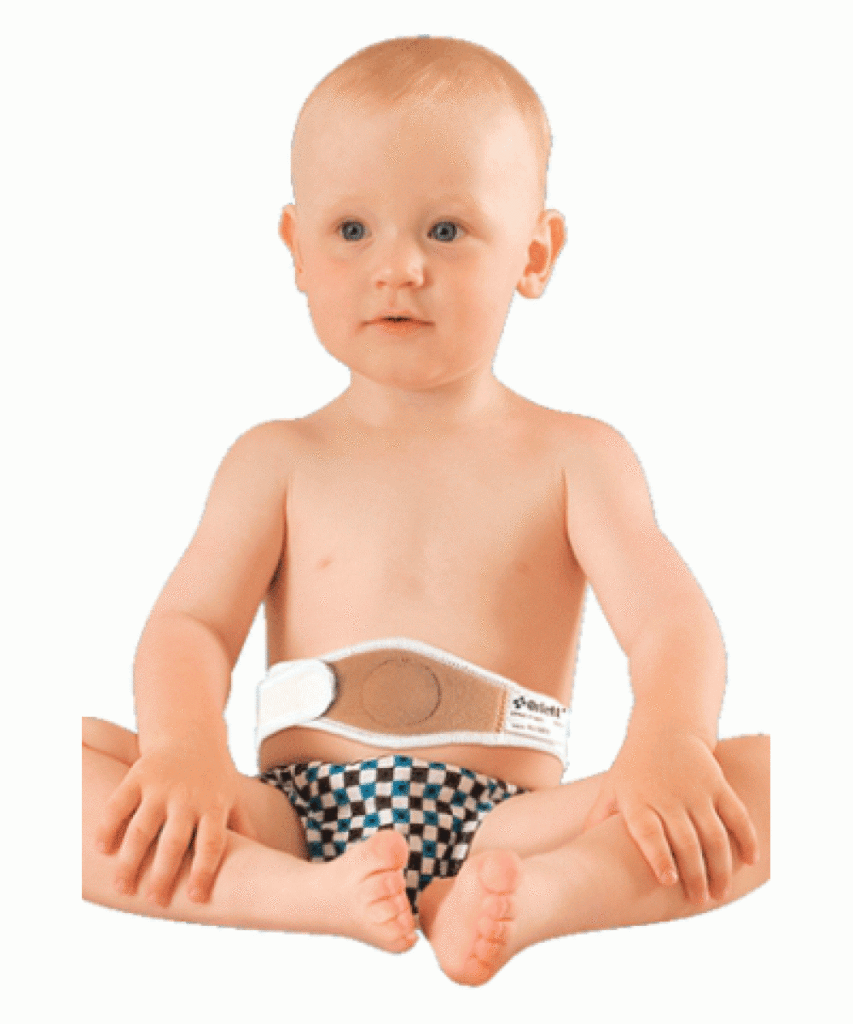
- universal model;
- suitable for different ages;
- pleasant to the body fabric;
- as part of a comprehensive treatment shows a good result;
- can be used for prevention.
- expensive bandage;
- the back narrow part rolls down;
- can move.
The average price of the model is 1040 rubles.
Comfort Orth K 300
votes 0
This bandage anti-hernia belt is intended for use after surgery. It prevents the recurrence of a hernia and possible complications. With this bandage, you can securely fix the child's navel area. This helps reduce the chance of a hernia bulging. After its application, pain after surgery is reduced, and recovery is fast. The belt can be used for conservative hernia therapy.
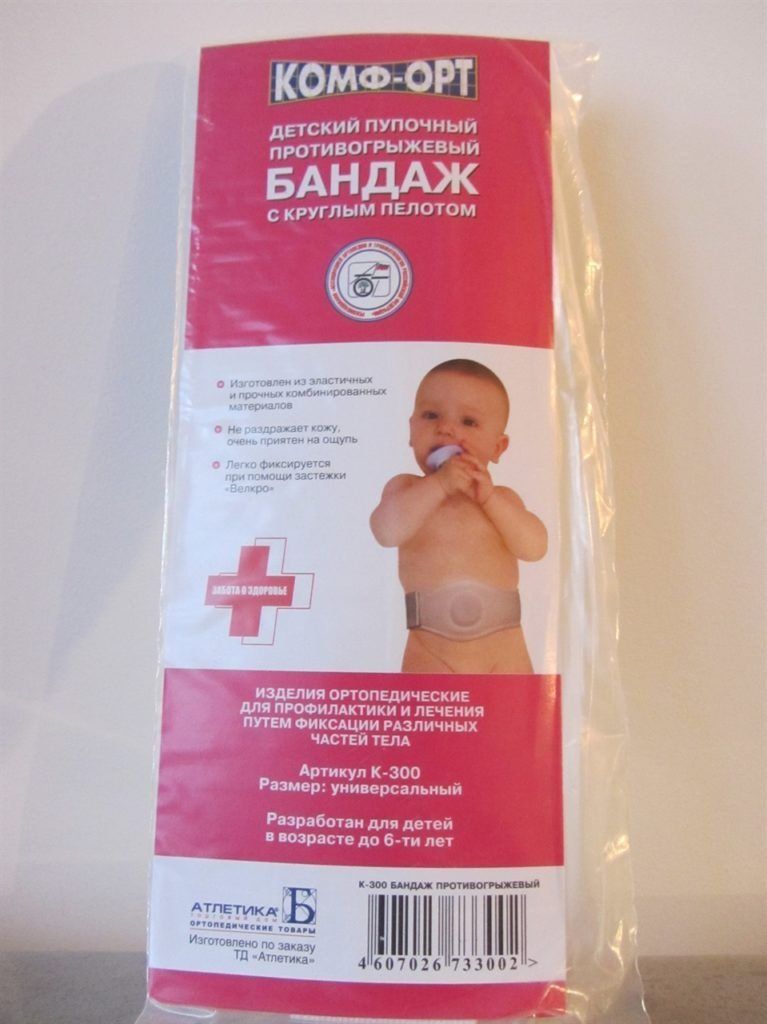
- Made from soft fabric that is pleasant to the body;
- fastens with Velcro, so you can adjust the size;
- helps to shorten recovery after surgery;
- allowed to use for the treatment of hernia;
- Designed for 0 to 6 years old.
- effectively copes with hernia only as part of complex treatment;
- slips when the child moves.
The average price of this bandage model is 290 rubles.
Ecoten GP-001
votes 0
For the manufacture of this model of children's anti-hernial bandage, high-quality materials are used that can pass air and moisture with a high percentage of cotton. Thanks to this, the belt is pleasant to the body and does not cause irritation. It can be used to treat hernia in children under three years of age. With the help of this bandage, it is possible to prevent the infringement of the hernia and its prolapse. The device is used in the course of complex conservative treatment of umbilical hernia.
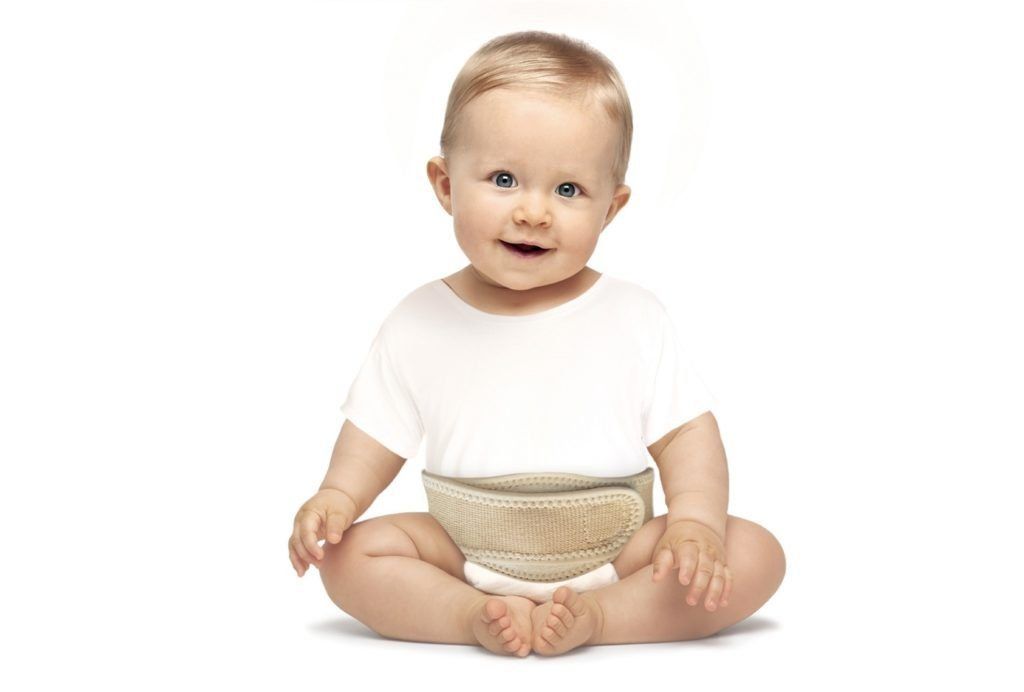
- high-quality hypoallergenic fabric;
- suitable for children of different ages;
- size can be adjusted with Velcro;
- used for both treatment and prevention.
- slips during the movement of the child;
- low efficiency.
The average cost of such a bandage is 640 rubles.
Elastic belts for the treatment of hernia in adults
Anti-hernia bandages for adults are usually prescribed to be worn after surgery. They help reduce pain and discomfort, promote healing of the postoperative suture. For the manufacture of such bandages, high-quality hypoallergenic fabrics are used that do not irritate the skin. For a more precise size adjustment, most models use a Velcro fastener.
Postoperative bandage Komf-Ort K 604
votes 0
This bandage belt is intended to support the anterior wall of the peritoneum and prevent the appearance of a hernia. It has a slight compression effect on the lumbar region, thereby reducing pain. It is recommended to wear this bandage after abdominal operations. Synthetic fiber is used to make the bandage, which helps it to maintain strength and elasticity for a long time.
Since the material of the bandage is not natural, it must be worn over underwear. In this case, the belt should fit snugly to the body, the size can be adjusted with Velcro.
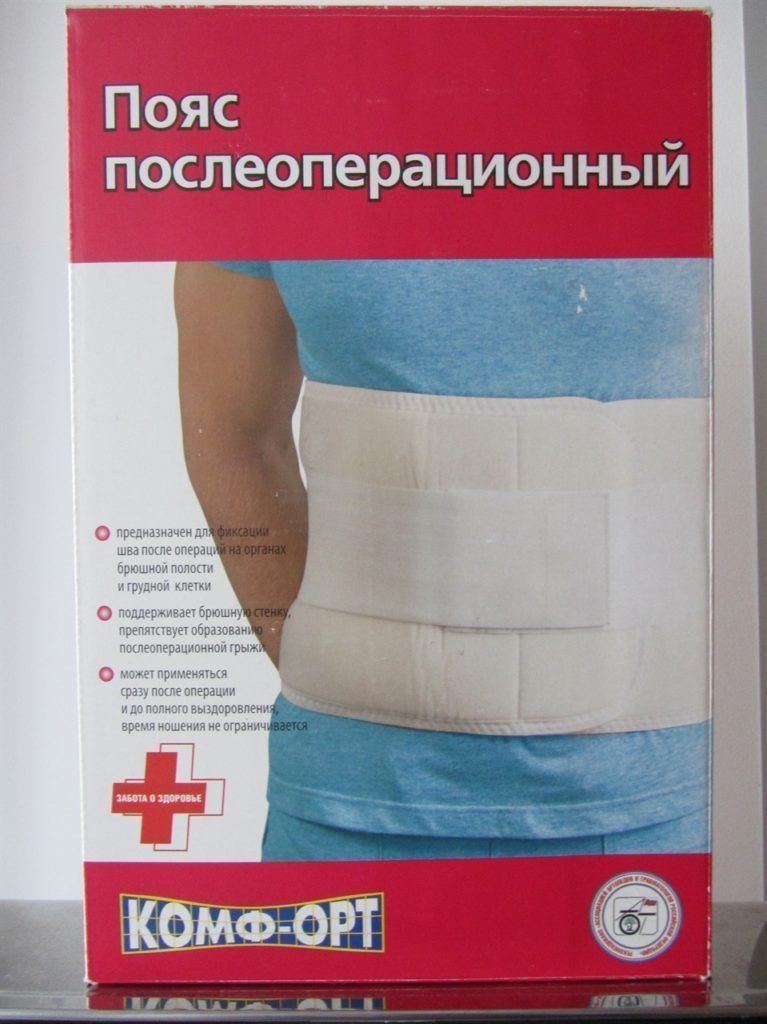
- helps prevent hernia;
- reduces pain after surgery;
- has an average degree of fixation;
- wear-resistant.
- made of synthetic fabric;
- expensive.
The average cost of this bandage is 1390 rubles.
Anti-hernial belt Komf-Ort K 600
votes 0
This hernia bandage is made of fabric that is breathable and does not irritate the skin. Its wearing is prescribed after operations in the peritoneal region to prevent the formation of a hernia and accelerate the healing of the suture. The bandage helps to reduce pain and prevents the development of complications.
The device is made of combined materials, has a removable pad that can be installed on the intended area of the protrusion or on the postoperative wound. To adjust the fit to the body, there is a removable elastic band and Velcro fasteners.
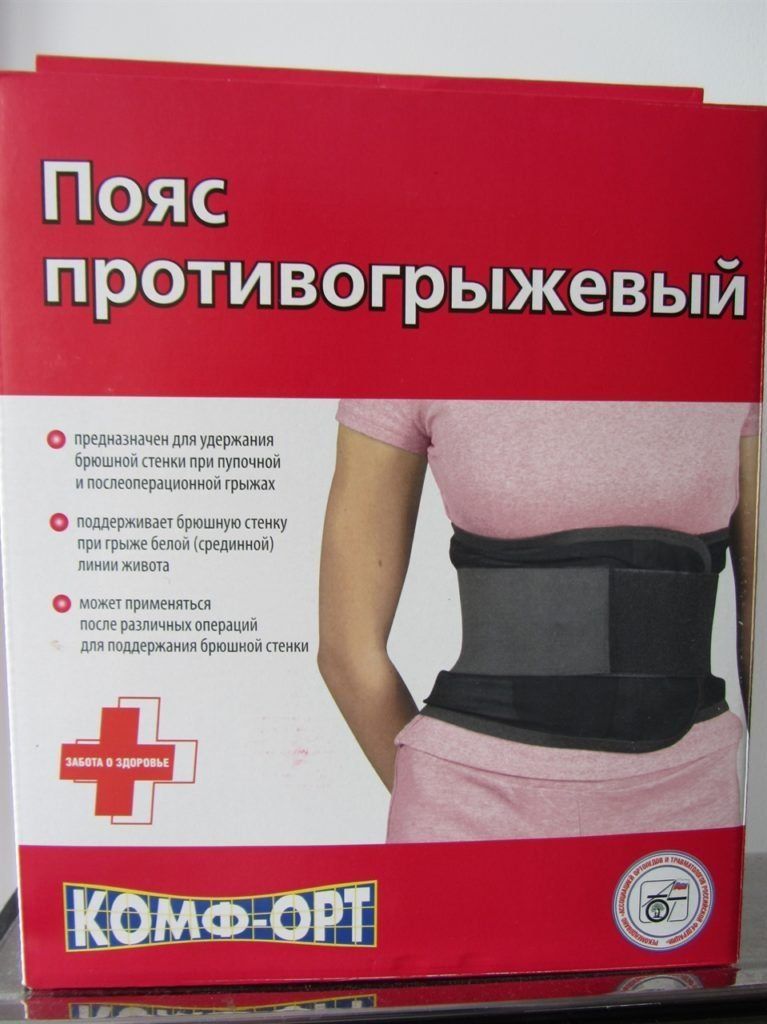
- can be used to treat a hernia or recover from other surgeries;
- made of breathable fabric;
- does not cause skin irritation;
- can be worn directly on the body or on underwear;
- reduces pain.
- expensive model.
The average cost of a bandage is 1340 rubles.
| No. p / p | Name | Age | Price |
|---|---|---|---|
| 1 | Orlett HP-B | up to 3 years | 1040 |
| 2 | Comfort Orth K 300 | up to 6 years | 290 |
| 3 | Ecoten GP-001 | up to 3 years | 640 |
| 4 | Comfort Orth K 604 | for adults | 1390 |
| 5 | Comfort Orth K 600 | for adults | 1340 |
In the assortment of modern pharmacies and specialized stores you can find a wide selection of bandages for the treatment of hernias of various kinds. When buying such a device, you must be guided by the recommendation of the attending physician, since all models have a different purpose.
new entries
Categories
Useful
Popular Articles
-

Top ranking of the best and cheapest scooters up to 50cc in 2022
Views: 131657 -

Rating of the best soundproofing materials for an apartment in 2022
Views: 127697 -

Rating of cheap analogues of expensive medicines for flu and colds for 2022
Views: 124524 -

The best men's sneakers in 2022
Views: 124041 -

The Best Complex Vitamins in 2022
Views: 121945 -

Top ranking of the best smartwatches 2022 - price-quality ratio
Views: 114984 -

The best paint for gray hair - top rating 2022
Views: 113400 -

Ranking of the best wood paints for interior work in 2022
Views: 110326 -

Rating of the best spinning reels in 2022
Views: 105334 -

Ranking of the best sex dolls for men for 2022
Views: 104373 -

Ranking of the best action cameras from China in 2022
Views: 102221 -

The most effective calcium preparations for adults and children in 2022
Views: 102016

